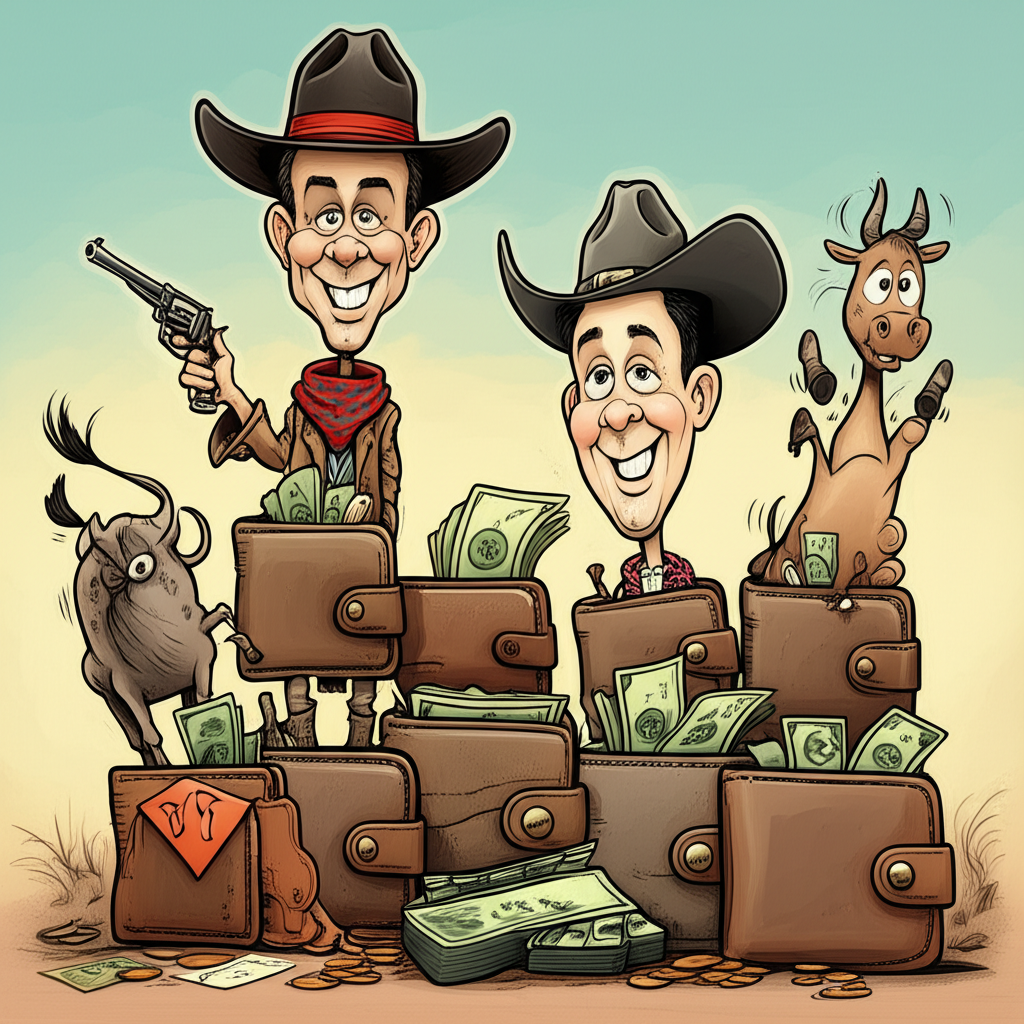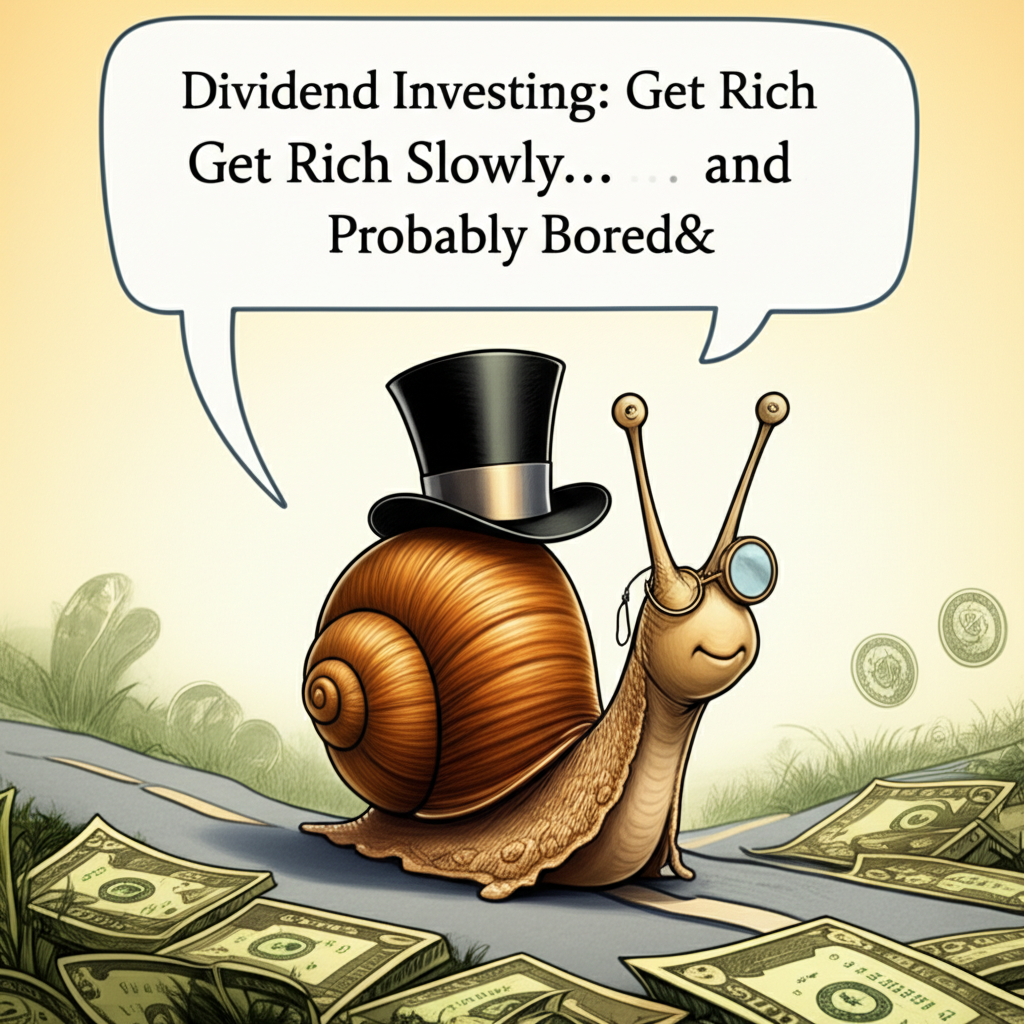
The Wild West of Wallets: A Humorous (and Slightly Terrifying) Look at ETFs
Once upon a time, investing was simple. You bought a stock, you bought a bond, you maybe even dabbled in a mutual fund if you were feeling adventurous. Then, like a highly caffeinated financial wizard, the Exchange Traded Fund (ETF) burst onto the scene. Suddenly, you could invest in anything. And we mean anything.
Prepare yourselves, dear readers, for a journey into the glorious, absurd, and occasionally bewildering world of ETFs.
Article 1: Beyond SPY: The ETFs You Never Knew You Needed (And Definitely Don’t)
Headline: "Introducing the ‘Existential Dread’ ETF: Because Your Portfolio Should Feel What You Feel"
Remember when ETFs were just about tracking the S&P 500? Ah, simpler times. Now, the ETF market is less a financial instrument and more a hyper-specialized deli counter where you can get a slice of anything – no matter how niche, ludicrous, or emotionally manipulative.
For the uninitiated, an ETF is like a basket of investments (stocks, bonds, commodities, artisanal sourdough starters, you name it) that trades on a stock exchange like a single share. This means instant diversification, lower fees than your average mutual fund, and the ability to get exposure to sectors so specific, they practically require a microscope to define.
But the real magic (or madness) begins when you look at the sheer breadth of what’s out there. Gone are the days of just "tech" or "energy." We’ve evolved. We’ve matured. We’ve discovered the true depths of human financial ingenuity.
Consider these hypothetical (but alarmingly plausible) new offerings:
-
The "Millennial Avocado Toast & Streaming Services" ETF (MAST): A diversified portfolio of companies profiting from late-stage capitalism’s most iconic consumption habits. Includes shares in streaming giants, ethically sourced avocado distributors, and that one artisanal bakery that charges $12 for a single slice of bread. Performance is highly correlated with brunch trends and binge-watching habits. Disclaimer: May cause generational eye-rolls.
-
The "Pre-Coffee Grumpy Office Worker" ETF (PCGOW): Invests in companies that thrive on human dependency before their first cup of joe. Think coffee bean importers, alarm clock manufacturers, and manufacturers of bland, institutional office furniture designed to absorb the collective sighs of humanity. Beta is remarkably stable, much like your co-worker’s mood before 9 AM.
-
The "Lost Remote Control & Missing Socks" ETF (LRCMS): A truly disruptive innovation! This ETF invests in companies that benefit from the chaos of domestic life. Think manufacturers of cheap, easily misplaced electronics, laundry detergent companies (because someone’s still doing the washing!), and perhaps a few firms specializing in emotional support animals for the truly frustrated. Performance is inversely correlated with household tidiness.
-
The "Unread Terms & Conditions" ETF (UTAC): Ever scroll past 30 pages of legalese and click "Agree"? Congratulations, you’re part of the target market for UTAC! This fund holds stakes in major tech companies, social media platforms, and any corporation whose business model relies on the sheer exhaustion of their users to sign away their rights. A truly passive investment, just like your reading habits.
The Takeaway: While thematic ETFs can offer exposure to exciting growth areas (like clean energy or artificial intelligence), the proliferation of hyper-niche funds raises an important question: are we truly investing in a future trend, or just trying to monetize every fleeting thought that crosses our minds? Remember, folks, diversification is key, but so is not investing in something simply because it sounds like a bad stand-up comedy bit.
Article 2: The "Set It and Forget It" Fallacy: Why Your ETF Still Needs a Hug (And Maybe a Therapist)
Headline: "Your ‘Passive’ Portfolio Just Demanded a Raise: The Unexpected Emotional Labor of ETFs"
The beauty of ETFs, we’re told, is their passivity. Buy a broad market index ETF, and you’re essentially buying a slice of the entire economy. It’s the ultimate "set it and forget it" strategy. You can spend your days meditating, learning interpretive dance, or perfecting your sourdough starter, safe in the knowledge that your money is quietly growing, unbothered by market whims.
Except, it’s not.
While most ETFs are designed to track an index rather than be actively managed, the act of owning them is anything but passive for the average human investor.
The Seven Stages of ETF Ownership (The Unofficial Investor’s Journey):
-
The Honeymoon Phase ("Ah, Simplicity!"): You buy your first broad-market ETF. You feel smart, sophisticated, and incredibly efficient. You tell all your friends about how you’re "diversified" and "minimizing fees." You probably even buy a new, slightly smug-looking coffee mug.
-
The First Dip ("Is This Normal?!"): The market has a bad week. Your ETF dips. You nervously check your phone every 15 minutes. You Google "stock market crash 2024" at 3 AM. You start questioning every life choice that led you to believe you were capable of managing money.
-
The FOMO Phase ("But What About That Other ETF?"): Your friend mentions they bought into the "AI-Powered Quantum Computing & Vegan Cheese" ETF (AIQVC), and it’s up 300% in two weeks. You immediately feel inadequate. Your "boring" broad-market ETF suddenly feels like a horse-drawn carriage in a world of rocket ships. You start researching AIQVC until your eyes bleed.
-
The Over-Optimization Phase ("Rebalancing My Soul"): You decide your portfolio isn’t "optimized." You spend hours on Reddit forums, watching YouTube gurus, and reading dense financial blogs. You discover "factor investing," "momentum strategies," and the "beta of your procrastination." You start trading in and out of ETFs with the conviction of a seasoned hedge fund manager, only to realize you’re just racking up transaction fees.
-
The "News Cycle Panic" Phase ("Is That a Tweet About Inflation?!"): Every headline becomes a personal attack on your portfolio. A celebrity sneezes, and you’re convinced it will impact the global supply chain, thus tanking your "Global Infrastructure & Artisanal Craft Beer" ETF (GIACB). You develop a nervous twitch every time you hear the word "recession."
-
The "Why Can’t I Be Like Warren Buffett?" Phase ("Existential Financial Crisis"): You realize that despite all your "passive" investing, you’re spending more time worrying about money than you did when you actively managed your old flip phone’s contact list. You wonder if Warren Buffett ever felt this stressed about his Berkshire Hathaway shares. (Spoiler: Probably not.)
-
The Acceptance Phase (Or, The "Screw It" Phase): You either return to true passive investing, accepting market volatility as a fact of life, or you throw your hands up, sell everything, and invest solely in lottery tickets and artisanal coffee beans. Either way, you’ve learned that "passive" investing doesn’t mean "passive" emotional management.
The Takeaway: ETFs are fantastic tools for diversification and cost-efficiency. But remember, the human element is rarely passive. Your brain, with its innate tendency towards panic, FOMO, and overthinking, is the real active manager here. So, buy your ETFs, but also consider investing in a good book, a hobby, or perhaps a therapist. Your portfolio might be diversified, but your sanity needs its own robust asset allocation.


Post Comment